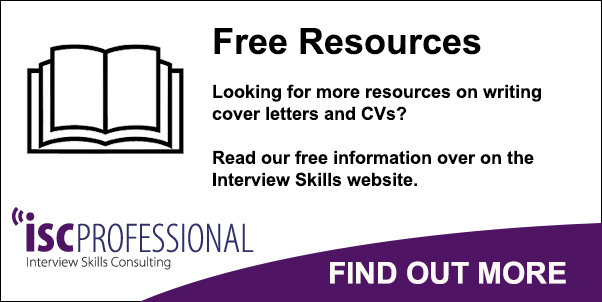5 Big Cover Letter Mistakes to Avoid & Examples
First impressions are universally considered to be the most impactive and this is particularly true when it comes to job applications. The first time a prospective employer gets to assess your fit for their organisation is when they read your covering letter.
Getting the structure, content and tone right in this key document is critical to achieving a successful employment outcome. Here we take a closer look at common cover letter mistakes and how you can avoid them.

1) Long-winded
An effective cover letter should tell the story of why you are the ideal candidate. To do this it needs to be comprehensive, yet concise, with a clear beginning, middle and end. It does not need to chart your life story or the details of every previous position you have ever held. Adopt a clear structure and only include information which is directly relevant to the specific job.
Adopt a clear structure and only include information which is directly relevant to the specific job. Using a template can ensure you include essential information such as the job applied for, the date, your address details and those of the employer- this is standard practice in business correspondence and also helps if your CV gets separated from your cover letter.
2) Generic
Different jobs require different skills and experience, and so each cover letter should be tailored to meet these varied needs. Candidates often fall into the trap of producing one well-honed standard cover letter which they use for every job. This may save time, but the lack of effort will be glaringly obvious to the recruiter. Carefully consider what the employer is looking for and clearly demonstrate how you match those criteria.
This may save time, but the lack of effort will be glaringly obvious to the recruiter. Carefully consider what the employer is looking for and clearly demonstrate how you match those criteria. Also include details which show that you have researched and understand their organisation.
3) Overly informal
Your cover letter is a professional document and is intended to be a representation of what you can contribute to the organisation. It should therefore be written in a formal business style. While today’s conversations are often conducted in text speak with a smattering of emojis, this is not an appropriate approach when constructing a cover letter. If you want to be considered as a serious contender for the post then you need to ensure your cover letter is, well, serious. Choose a font which is easily read and only use capitals in headings –
Choose a font which is easily read and only use capitals in headings – otherwise the employer may think you are shouting at them.
4) Contains errors
Everyone can make mistakes in life but there is no margin for such error in a job application cover letter. With so many proof reading and spell check tools available there really is no excuse for submitting a document which includes grammatical and spelling mistakes, and yet all too many candidates still manage it. Potential employees still sadly fall at the first hurdle by failing to thoroughly check their documentation before presenting it to the employer. This creates an impression of sloppiness and lack of attention to detail- hardly the qualities you would want to communicate to a recruiter.
This creates an impression of sloppiness and lack of attention to detail- hardly the qualities you would want to communicate to a recruiter. Read and re-read your cover letter before posting or hitting the send button- this is always a worthwhile investment of your time.
5) Bland
Employers often sift through hundreds of cover letters, so you need to grab their attention. Adopt positive, dynamic language to describe your achievements, your skills and your suitability for the job. Use descriptive verbs and adjectives to bring your work story to life. Don’t shy away from quoting specific examples of how you have made a difference in previous jobs and if possible back up your claims with solid evidence.
For more tips on cover letters and CVs, check out our free information on the Interview Skills website.





